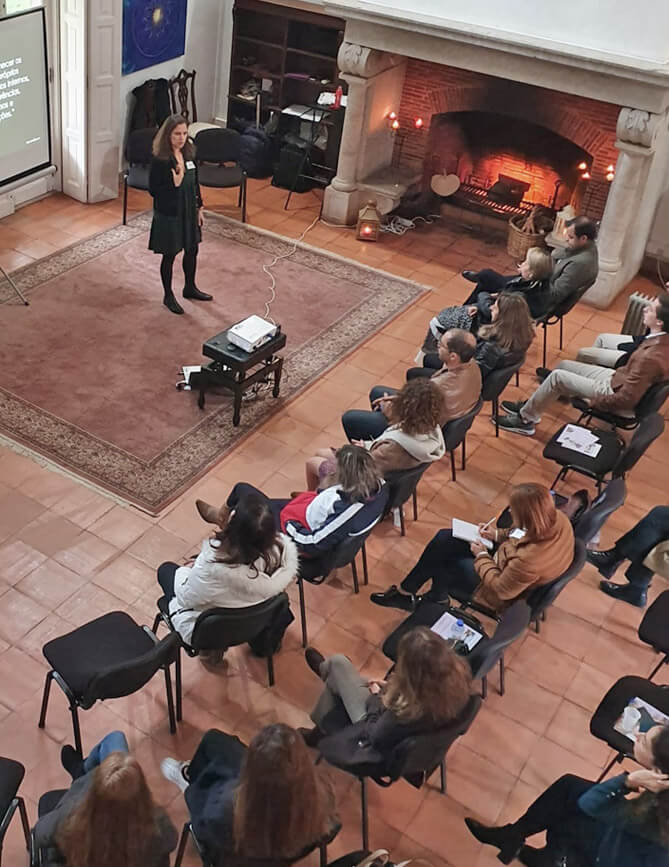We live in an increasingly digital era, where technology is transforming the way we work, communicate and collaborate. Companies face ever-increasing challenges, such as complexity, uncertainty, stress and competitiveness. To adapt and thrive in this scenario, companies need to be flexible, creative, innovative and efficient.
In this context, Agile methodologies have emerged as one of the effective approaches for the development of products and services, based on collaboration, experimentation and feedback. However, being Agile does not just mean following a set of methods or tools. Agile is all about recognizing the uncertainty in front of us and accepting that there are things we don’t control or don’t know about and that we will discover or learn along the process. In order to cultivate this mentality, while maintaining confidence and offering our best at each stage of the process, we need to develop socio-emotional skills, such as resilience, attention span, communication and empathy. This is where Mindfulness comes in, as a practice that helps to improve these skills and foster an agile mindset.
Mindfulness and Agile may seem like distant concepts, but they actually have a lot in common and can complement and reinforce each other. Both aim to promote greater awareness, flexibility, creativity and efficiency, both at the individual and collective level.
Here are some concrete examples of how the practice of Mindfulness can enhance Agile:
- Improving focus: The practice of Mindfulness can help employees to focus on the most important tasks and objectives, avoiding distractions and interruptions. As a consequence, it can improve productivity and efficiency, by reducing waste and allowing value to be delivered faster. The ability to focus in the present moment also allows to reduce anxiety in the face of uncertainty and embrace the “learning by doing” fundamental in the Agile mentality.
- Increasing self-awareness and emotional regulation: the practice of Mindfulness can help employees to recognize and manage their emotions better, such as anxiety and stress, frustration, anger or fear. The practice helps these emotions not to be avoided or denied, but to be felt or expressed in a constructive way, creating a positive impact on performance and well-being. Mindfulness can also help employees to identify and correct their cognitive biases, such as resistance to change, risk aversion, illusion of control, among others, which can somehow block their ability to make decisions and their creativity.
- Improving communication and collaboration: The practice of Mindfulness can help to develop more effective and empathic communication, with greater active listening, which will allow more appropriate feedback and more effective negotiation, essential in Agile projects. Mindfulness also enhances collaboration and cooperation, promoting trust, respect, transparency and empathy, allowing the creation of environments of greater psychological safety.
- Stimulating creativity and innovation: The practice of mindfulness allows greater openness, curiosity and non-judgement, which helps to stimulate creativity and innovation. It can help employees to explore different perspectives and solutions, avoiding attachment to limiting beliefs or preconceived ideas. Mindfulness also helps to cultivate self-compassion, which can help employees to experiment and learn from their mistakes, without avoiding or denying them.
- Promoting adaptation and continuous improvement: The practice of mindfulness can help employees to adapt better and to promote continuous improvement, by increasing their ability to respond to change rather than resist it. Changes are seen as opportunities for learning and growth, rather than threats or obstacles.
As a conclusion and in response to the question in the title, I believe that there is no true agility if there is not this ability to be attentively present to myself and to the other. Mindfulness and Agile are two approaches that complement and reinforce each other, creating a synergy that can bring benefits at various levels. At the individual level, mindfulness can improve focus, performance and well-being of employees. At the team level, Mindfulness can improve cohesion, communication and collaboration of agile teams, by increasing trust, empathy and respect among team members.
It is important to reinforce that for effective results in the use of these approaches, they have to be included in the company culture, being essential that there is a commitment and involvement of all levels of the organization, from leadership to employees. It is necessary that there is a clear and shared vision of what it means to be an Agile and Mindful organization, that there is a coherent and consistent strategy and action plan to implement and evaluate the necessary changes and that there is continuous support and monitoring to facilitate and encourage the practice, both at the individual and collective level.

